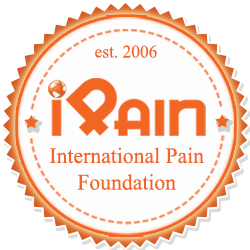Chronic pain is one of those things that doesn’t take a break just because the seasons change. Whether it’s the cold, the heat, or just the shifting pressure, many people experience flare-ups and discomfort depending on the time of year. Temperature changes, activity levels, and the environment can all play a significant role in how pain feels and how much it affects daily life, which is why it’s essential to be aware of these changes so you can take steps to prevent or manage your symptoms.
Winter—Cold Weather Woes
When the temperature drops, it’s not just the cold that can get to you; it’s also how your body responds to it. Many people with conditions like arthritis and fibromyalgia find that the colder months bring on stiffness, pain, and fatigue that’s hard to shake. Cold weather can make joints feel frozen, especially in conditions like osteoarthritis, leading to extra discomfort and joint pain. Back pain can also spike in winter, as the cold air tightens up muscles, and Raynaud’s disease can cause painful numbness in the fingers and toes. So, what can you do to help? First, stay warm—layer up, use heating pads, or try warm baths to loosen stiff muscles and joints. Staying active is key, even just gentle stretches or walks indoors to keep your muscles from locking up. Don’t forget to keep your body well-hydrated and take pain-relieving medications as your doctor advises. Your healthcare provider can also suggest physical therapy or more specialized treatments to help keep your body in check during the colder months.
Spring—Allergies and Migraines
As the flowers bloom and the weather warms up, spring brings with it some beautiful sights—but also some serious challenges for those who suffer from chronic pain. Seasonal allergies are one of the biggest triggers, which can cause sinus headaches and facial pain as pollen fills the air. Those with migraines know that changes in barometric pressure and fluctuating temperatures can worsen their symptoms. It’s also a time when people become more active outdoors, and sports injuries like tendon strains and sprains can lead to lasting pain. So, how do you keep it all under control? For allergies, antihistamines and nasal sprays can help manage sinus pain and congestion. If migraines are your problem, consider using a cool compress or staying in a dark, quiet room to reduce the intensity, and don’t forget to take it easy on new outdoor activities—start slow, warm up before any heavy activity, and don’t hesitate to visit your doctor for advice on preventing injuries or treating them quickly if they occur.
Summer—Heat, Dehydration, and Joint Pain
It’s a time to get outside and soak up some sunshine, but for people with chronic pain, summer can come with its own set of issues. Tendinitis is one of the most common problems, as warmer weather leads to more outdoor activities. Overuse of tendons can lead to inflammation and pain, especially for those who do a lot of walking, running, or lifting. On top of that, the heat and dehydration can lead to more chronic headaches, which are already a challenge for many people. And let’s not forget about joint pain, which often worsens in the humid summer air as the pressure changes and swelling increases. So, how can you avoid feeling miserable in the heat? Drink plenty of water to stay hydrated, which can help prevent headaches and joint pain. If you’re dealing with tendon issues, avoid over-exerting yourself—take breaks, stretch regularly, and use proper technique. You may consider using cooling gels or ice packs to alleviate joint pain. Staying on top of your pain management plan with the help of your doctor is essential for enjoying the summer without setbacks.
Fall—The Transition Time
The cooler weather can bring on flare-ups of chronic back pain, especially as people start changing their routines and postures, whether from sitting more as the weather cools or preparing for colder months. For those with arthritis, the cooler temperatures can cause increased joint stiffness and discomfort, making it harder to stay mobile. The key to keeping chronic pain under control during falls comes down to staying consistent with self-care. Make sure to layer up and keep your body warm as temperatures dip. Keep active to prevent stiffness, especially by focusing on your core and lower back muscles. For arthritis sufferers, using hot packs or engaging in low-impact exercises like swimming or yoga can help relieve joint pain. As always, don’t hesitate to contact your healthcare provider for advice on managing flare-ups effectively.
It’s important to remember that while chronic pain can be influenced by the seasons, it’s a year-round issue that needs consistent management. Pain can vary and sometimes get worse, Whether during the cold of winter or the sweltering heat of summer. The best way to keep it in check is by staying proactive—keep up with physical therapy, exercise, hydration, and using pain management strategies that work for you. Consult with your healthcare provider to create a tailored plan that considers seasonal changes and your needs. With the proper steps, you can make sure chronic pain doesn’t stop you from living your best life, no matter the time of year.
Author: Jennifer Dawson
Published by: International Pain Foundation, Team iPain, iPain Blog

